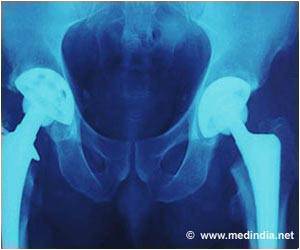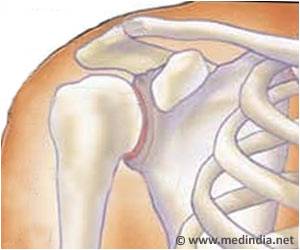Total joint arthroplasty patients with postoperative hyponatremia (low sodium levels) are more likely to experience a twofold increase in complications and other adverse outcomes.

‘Total joint arthroplasty (TJA) patients with postoperative hyponatremia (low sodium levels) experience a twofold increase in complications and other adverse outcomes.’
Read More..




Hyponatremia is an overlooked sign of trouble following total joint arthroplasty (TJA), according to the new research by Javad Parvizi, MD, FRCS, and colleagues of Rothman Orthopedic Institute at Thomas Jefferson University. They write, "Efforts should be made to evaluate and, if possible, address hyponatremia in the preoperative period." Read More..
Incidence and Impact of Hyponatremia After Total Joint Arthroplasty
The researchers analyzed 3,071 primary and revision TJAs performed at their high-volume orthopaedic surgery center between 2015 and 2017. All patients had at least one preoperative and one postoperative sodium measurement. The patients' average age was 67 years, and 54% were women.In 84.6% of patients, sodium levels were normal both preoperatively and postoperatively. Another 9.4% of patients had normal sodium levels preoperatively but had hyponatremia (serum sodium level <135 milliequivalents per liter) postoperatively; 2.1% had hyponatremia preoperatively but normal sodium levels postoperatively; and 3.8% had hyponatremia both preoperatively and postoperatively. Patients with postoperative hyponatremia were more likely to have a history of congestive heart failure, stroke, liver disease, and chronic kidney disease.
Postoperative hyponatremia was linked to increases in several adverse outcomes – particularly in patients who had low sodium levels both before and after TJA. Patients in this group spent more time in the hospital (average 6.4 days), were more likely to be discharged to a rehabilitation or nursing center rather than home (43%), and were more likely to be readmitted to the hospital within 90 days (18%).
Twofold Increase in Complications with Postoperative Hyponatremia
After adjustment for other factors, the risk of a complication was 2.1 times higher among patients who had hyponatremia postoperatively and 2.6 times higher among patients who had hyponatremia both preoperatively and postoperatively.Patients with postoperative hyponatremia were also more likely to have a non-home discharge (1.7 and 3.0 times higher among those with normal and low preoperative sodium, respectively) and spent more days in the hospital after surgery. Patients with greater decreases in sodium after TJA were at higher risk of each of these adverse outcomes. Hyponatremia was a significant risk factor for patients undergoing both primary and revision TJA.
For patients with preoperative hyponatremia that normalized after TJA, outcomes were similar to those of patients who had normal sodium levels both preoperatively and postoperatively. Counterintuitively, patients with postoperative hyponatremia that was corrected after surgery but before hospital discharge had longer length of stays, and worse outcomes than those who did not have their sodium corrected.
Advertisement
"Patients with preoperative and postoperative hyponatremia were particularly at risk," the researchers add. They emphasize the need for further studies to determine whether hydration protocols and other ‘medical optimization’ steps can mitigate the adverse effects of low sodium levels in patients undergoing TJA.
Advertisement















